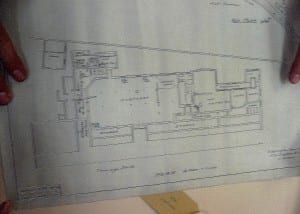“Installation art is a term that loosely refers to the type of art into which the views physically enters and is often described as theatrical, immersive or experimental”(p.6) – Clare Bishop
Bishop writes that there is a difference between the installation of art and installation art. Installation of art is important in the works it actually contains while installation art the ensemble of elements in it as well as space are regarded as a singular entity in itself. By doing this installation art actually gives the viewers a change to step into a simulation, by physically entering the thing the artist has created and insists you regard the space as a singular totality. By this idea then the actual installation has a need for a audience to have them be it’s key characteristic. Without a viewing participant(s) the space remains without a purpose and therefore without a meaning. This then however made me think as to how if someone doesn’t see, or really grasp, the meaning of a installation is that then too devoid of meaning? Does that effectively make it something that has no willing audience.
By this moment I had extremely overthought my analysis on the definition of installation art so, on a whim, I decided to look up on the Tate’s website to a actual definition to it. The online post, again by Claire Bishop, opened wight the following, strangely amusing, questions:
What does the term ‘installation art’ mean? Does it apply to big dark rooms that you stumble into to watch videos? Or empty rooms in which the lights go on and off?
I don’t know what made me grin when I was looking through this post. Was Bishop making a tongue in cheek dig at the more cliché aspects of installation art. I haven’t seen many works of installation myself but before learning more about them I did assume they encompass mostly what she stated.
The one piece I can recall was at the tender age of 10 when my parents took me to the Saatchi gallery and I stumbled into Richard Wilson’s 20:50, or at that age “a really big smelly room full of oil”. At age 10 I wasn’t focused on the meanings behind the works of art I was merely focused on things that involved Pokémon or Quavers but no at the age I am now I actually get it. The slick black oil in a pure white room gave a distortion to a willing viewer and even now I can still remember how the room looked. One extremely thin wall blocking the permanently still oil creates a spectacle almost.
In my EXPO’69 group we have decided to settle on a installation piece, with very brief cameos from us to portray a character of sorts. We are essentially recreating the EXPO, every minor detail accounted for just outside the Grandstand front doors. We want our audience to be enraptured in the fervidly festive atmosphere we wish to remake.
In conclusion I haven’t really grasped one at all… But by looking more into installation art as a whole I can see the process of what my group’s EXPO piece could do. Our meaning is to bring life into the Grandstand and provide a safe, unthreatening haven for our viewers before they enter the darker aspects of what the site has to offer. A rather nice counter balance if I do say so myself.
Works cited:
Claire Bishop (2005). Installation Art: A critical history. London: London Tate Publishing. 6-10.
http://www.tate.org.uk/context-comment/articles/it-installation-art










